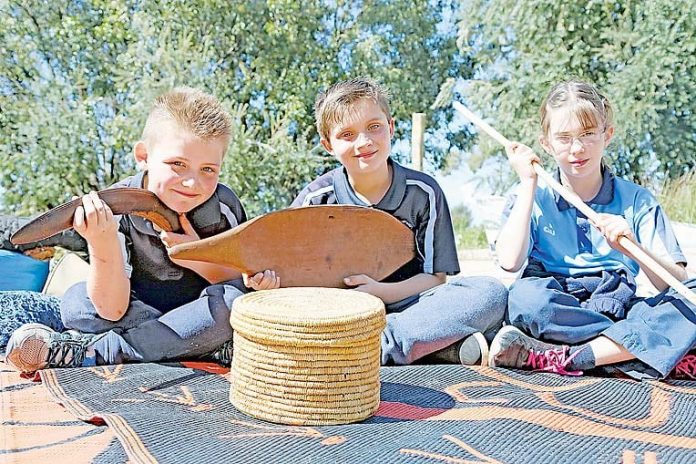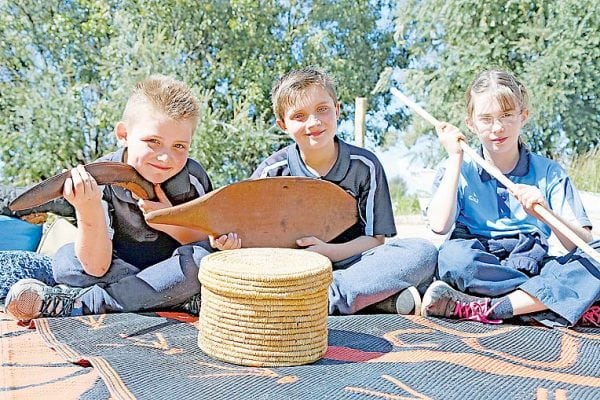

KINDERGARTEN and primary school students embraced Indigenous culture and history this week during a hands-on cultural experience at the Millicent High School’s Aboriginal meeting place garden.
Millicent North Kindergarten joined Tantanoola Primary School students on Wednesday afternoon to view the latest additions at the garden and learn First Nations history, spirituality and rites through story and dance.
Aboriginal education worker Kathy Bell and South East Aboriginal Focus Group elder Doug Nicholls provided students with an interactive learning experience around Indigenous culture and history.
Mr Nicholls opened the afternoon with a smoking ceremony before detailing the traditional hunting and gathering methods used by Aboriginal people.
Four new totem poles installed and decorated by Millicent High School students were a highlight, with students eager to learn more about the symbolism of individual paintings.
Millicent High School Year 12 student Justin Wright said the totems were an important element of Indigenous Australian spirituality.
“Each pole has a meaning that connects to the land and tells a story,” he said.
“The poles themselves are placed in north, south, east and west directions and represent the landscape.
“There is a lot involved in getting the totems up and learning about what they mean and why they are used.
“It’s another part of connecting with the land and respecting the land.”
Ms Bell said the outdoor learning experience provided students with a unique opportunity to learn the Aboriginal way of life.
“The garden is based on the four directions as well as caring for and connecting to our country,” she said.
“It is a good way to use the setting as a cultural and teaching tool to share our knowledge about country and connection.”







